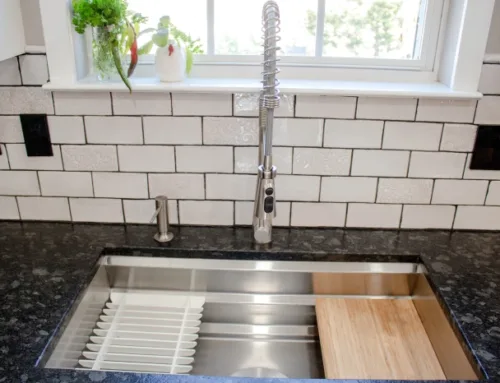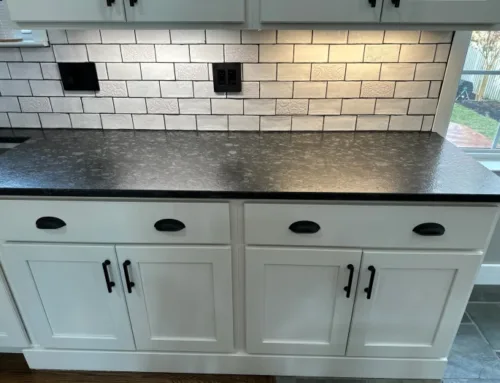Choosing the perfect paint color for your next project can be exciting and daunting. The right hue can transform a space, setting the desired mood and complementing your decor. Our interior design firm can guide you through the entire process, but if you want to go through it alone, here is what we suggest.
- Gather Inspiration
Begin by immersing yourself in various sources of inspiration. Create a mood board using images from design magazines, Pinterest, or Instagram. Pay attention to spaces that resonate with you and note the colors that appeal to your aesthetic. This foundational step will help you identify patterns in your preferences and provide a clear direction for your project.
- Consider Existing Elements
Take stock of the permanent fixtures in your space, such as flooring, countertops, cabinetry, and large furniture pieces. The undertones in these elements should harmonize with your chosen paint color. For instance, if your flooring has warm tones, opt for a paint color that complements this warmth to create a cohesive look.
- Understand Color Theory
Familiarize yourself with basic color theory to make informed decisions. The color wheel is a valuable tool that illustrates the relationships between colors. Complementary colors are opposite each other on the wheel, creating a dynamic contrast, while analogous colors, located next to each other, offer a harmonious and serene palette.
- Test with Samples
Once you’ve narrowed your choices, purchase sample sizes of the prospective paint colors. Believe me, this is a very wise investment. Apply them to large poster boards or directly onto your walls in 12” x 12” blocks. Observe how each color interacts with the room’s lighting at different times of the day, in different weather and seasons. This step is crucial, as lighting can significantly alter a color’s appearance. Also, there can be different types of lighting in the same room. Different lights give off different hues. Think of it like wearing different sunglasses with varying lenses of color. Each will appear differently while looking at the same image. Just like the color swatches you selected in the paint store, they can look totally different under natural light and in your home under a combination of different lighting and natural light coming into the room.
- Evaluate Sheen and Finish
The finish of your paint affects both its appearance and durability. Common finishes include:
- Flat/Matte: Offers a non-reflective surface, ideal for hiding imperfections but less durable.
- Eggshell/Satin: This finish provides a slight sheen, is more durable than flat, and is suitable for living rooms and bedrooms.
- Semi-Gloss: This finish has a noticeable shine, is durable and easy to clean, and is perfect for kitchens and bathrooms.
- High-Gloss: It is very shiny and durable and is mainly used for high-touch areas like trim and doors.
Choose a finish that aligns with the function and aesthetic of your space.
- Factor in Room Size and Lighting
Lighter colors can make a small room feel more spacious, while darker hues create a cozy atmosphere in larger spaces. Consider the amount of natural light the room receives. Opt for lighter shades to brighten the area in spaces with limited natural light. Conversely, rooms with abundant light can handle deeper, more saturated colors.
I love painting and wallpapering the fifth wall—the ceiling! What brings an instant, rich, cohesive design feeling to a space? A beautifully curated color palette that includes the ceiling.
- Reflect on Mood and Purpose
Think about the mood you want to establish in the room. For instance:
- Calming Spaces: Soft blues, greens, and neutrals promote relaxation, making them ideal for bedrooms and bathrooms.
- Balanced Environments: Earthy tones and muted colors offer a sense of stability, perfect for living rooms and dining areas.
- Stay Updated with Trends
While choosing colors you love is essential, being aware of current color trends can provide fresh ideas. For example, neutrals and greens are emerging as the top color choices, and I believe they are here to stay for a while as they offer versatility and a connection to nature. Conversely, I see colors like yellow and tan that can quickly date a room.
- Consult Professionals
If you’re still uncertain, consider seeking expert advice from our Interior Design firm, Forget Me Not Interior Design. As an interior designer, color is an integral part of the overall look and feel of the room, and we are here to guide you through this complex process.
- Trust Your Instincts
Ultimately, the best paint color is one that resonates with you. Trust your instincts and choose a color that makes you feel comfortable and happy in your space.
By following these steps, you’ll be well-equipped to select a paint color that enhances your project’s aesthetic and aligns with your vision. Remember, painting is an opportunity to express your style and breathe new life into your environment.






